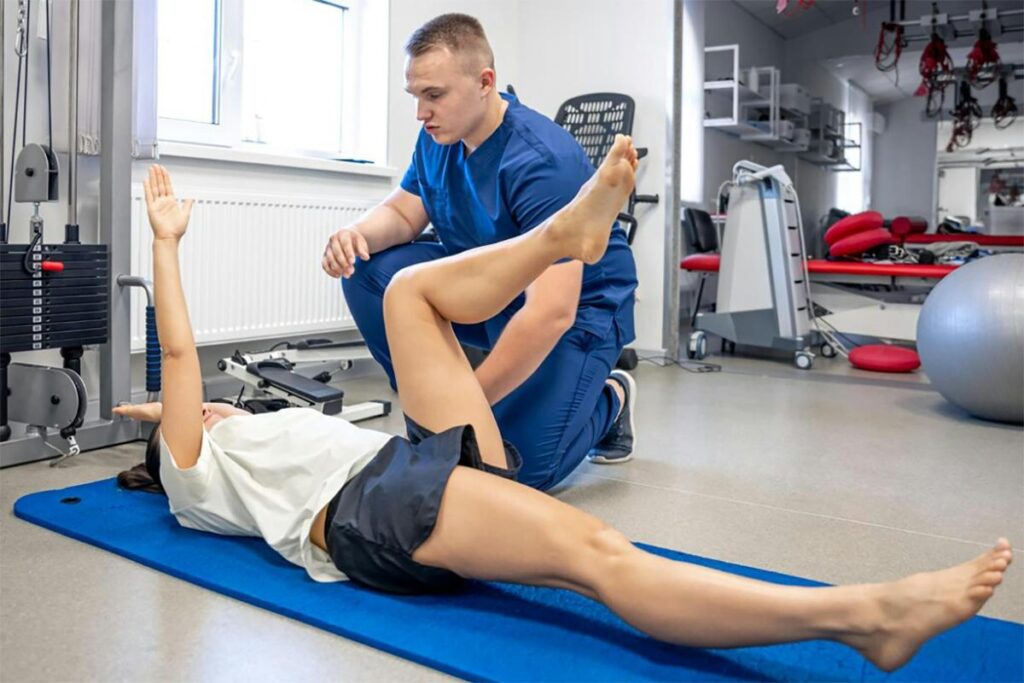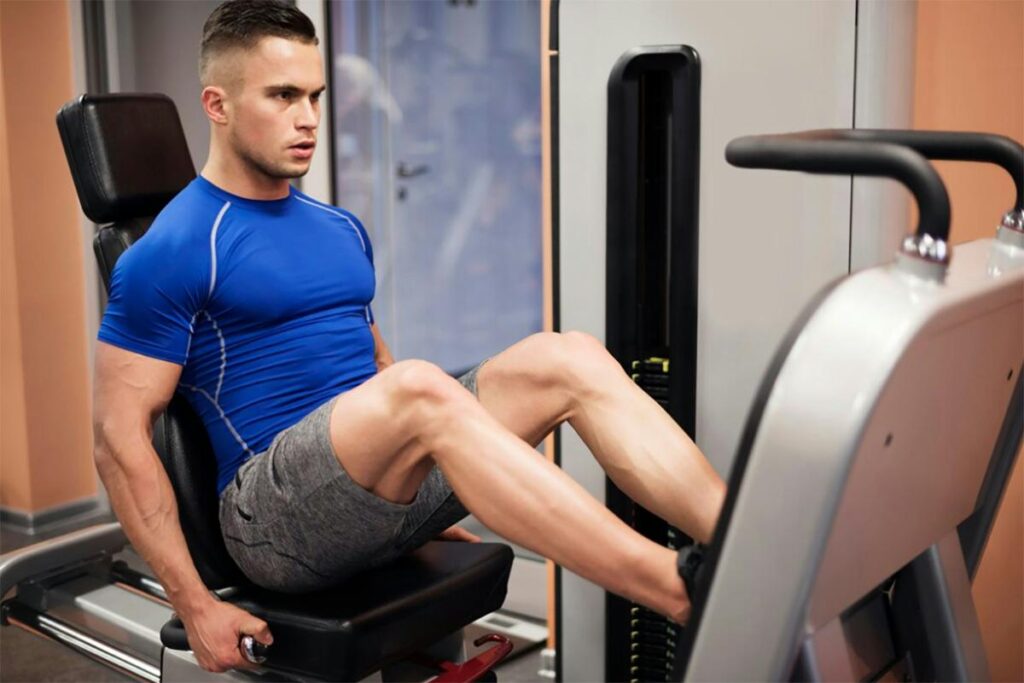In our quest for better health and fitness, we often explore a variety of exercises. Each of these exercises comes with its unique set of benefits and challenges. Our understanding and approach to these workouts determine their effectiveness and impact on our bodies. Today, we delve into the leg press exercise, specifically focusing on one common issue many people face: leg press back pain and the lumbar spine.
The leg press is popular among fitness enthusiasts, offering lower body strength and muscle development benefits. However, it’s common to encounter back pain if the leg press is not done correctly.
Introduction
Embarking on your fitness journey can be thrilling. As we explore various exercises to meet our goals, it’s vital to understand the mechanics of the leg press and how to execute it properly to reap the full benefits and avoid potential injuries.
What is the leg press?
The leg press is a weight training exercise where you push a weight away from your body using your legs. The seated leg press and the incline leg press target the same muscle groups—your quadriceps, hamstrings, and glutes, some of your body’s largest and most powerful muscles.
Distinct from free weight exercises like the bench press (which targets the upper body), the leg press utilizes a machine where the individual sits and pushes weight plates by extending the legs. The controlled movement of leg press machines helps isolate the lower body muscles. It allows you to focus on them without targeting overall body stability, which can be challenging in free-weight exercises. Thus, the leg press is beneficial for beginners learning strength training and seasoned gym-goers aiming for targeted muscle development.
What are the benefits of leg press exercises?
Leg press exercises provide a controlled way to strengthen and tone your lower body. They’re excellent for increasing leg strength, enhancing muscle mass, and improving overall athletic performance. Additionally, leg presses are highly customizable, allowing for variable resistance and positions to suit individual fitness levels and goals.
Another great advantage of the leg press is its low impact on the joints compared to other leg exercises like squats or lunges. This makes it a safer choice for individuals with knee or hip issues.
What causes back pain during leg press?
Improper form, too much weight, or underlying health conditions can cause pain during a leg press. In many cases, leg press lower back pain can occur when your lower spine is poorly supported or your abs are not properly engaged. Furthermore, injuries can lead to chronic discomfort if left unchecked.
How to Avoid Back Pain During Leg Press

First and foremost, consult with a physical therapy professional before beginning any new exercise regimen, especially if you’ve had previous back issues. This step can help you identify and address potential issues that might lead to leg press hurting your lower back.
Secondly, make sure to maintain a neutral spine throughout the exercise. Your back should be flat against the bench with your abs engaged. Avoid rounding or excessively arching your back. Adjust the seat and footplate for a comfortable foot position that allows you to press without straining your lower back.
The Best Techniques for Performing Leg Press Exercises with Proper Form
Correct form is critical in avoiding injuries. Start with a lighter weight to master the technique before gradually adding more resistance. Ensure your feet are hip-width apart on the footplate and your knees align with your feet throughout the exercise. Lower the weight slowly, allowing your knees to bend at a 90-degree angle before pushing the weight back up.
Keep your movements smooth and controlled, and avoid locking your knees at the top of the movement. By following these techniques, you can minimize the risk of lower back discomfort. Smooth and controlled movements not only enhance the effectiveness of the exercise but also protect your joints from sudden and repeated harsh impacts, which can lead to injuries. Specifically, when you avoid knee-locking, you prevent unnecessary stress on your knee joints, which can exacerbate existing issues or even lead to new ones over time.
Besides, proper breathing techniques also play a critical role in preventing back pain. Breathing helps maintain intra-abdominal pressure, offering additional support to your spine. Inhale at the beginning of your effort (as you begin to push the weight) and exhale as you end the effort (when you return to the starting position)
Remember, the aim is to challenge your body, not to harm it. By respecting your body’s signals and limitations, you can achieve a rewarding and injury-free workout experience. Fitness is not about pushing your limits at the expense of your health; it’s about sustainable progress and overall well-being.
Individual body mechanics can vary, and what works for one person may not work for another. So, listening to your body and seeking professional advice if needed is crucial. Visit the MedlinePlus and CDC websites for more information on back pain and exercise safety. You might also find Washington State University is a useful resource for information on leg presses and exercise biomechanics.
Powering Down: Your Takeaway from the Leg Press Journey
While the leg press is beneficial for lower body strength, it’s crucial to perform it correctly to avoid the leg press hurting lower back muscles and producing back pain. By focusing on proper form and techniques, you can reap the benefits of this exercise without the associated discomfort. If you experience persistent back pain, it may be time to consult a sports-medicine professional for back pain therapy. Remember, the key to successful exercise is maintaining balance – not only in your body but in your routine as well.
Physical fitness is a journey, not a destination. It’s about making consistent, incremental improvements over time. So, don’t be disheartened if you face challenges initially. Patience, perseverance, and the right technique are your best allies in this journey. And always remember, when it comes to physical exercise, your safety and well-being should always come first.

